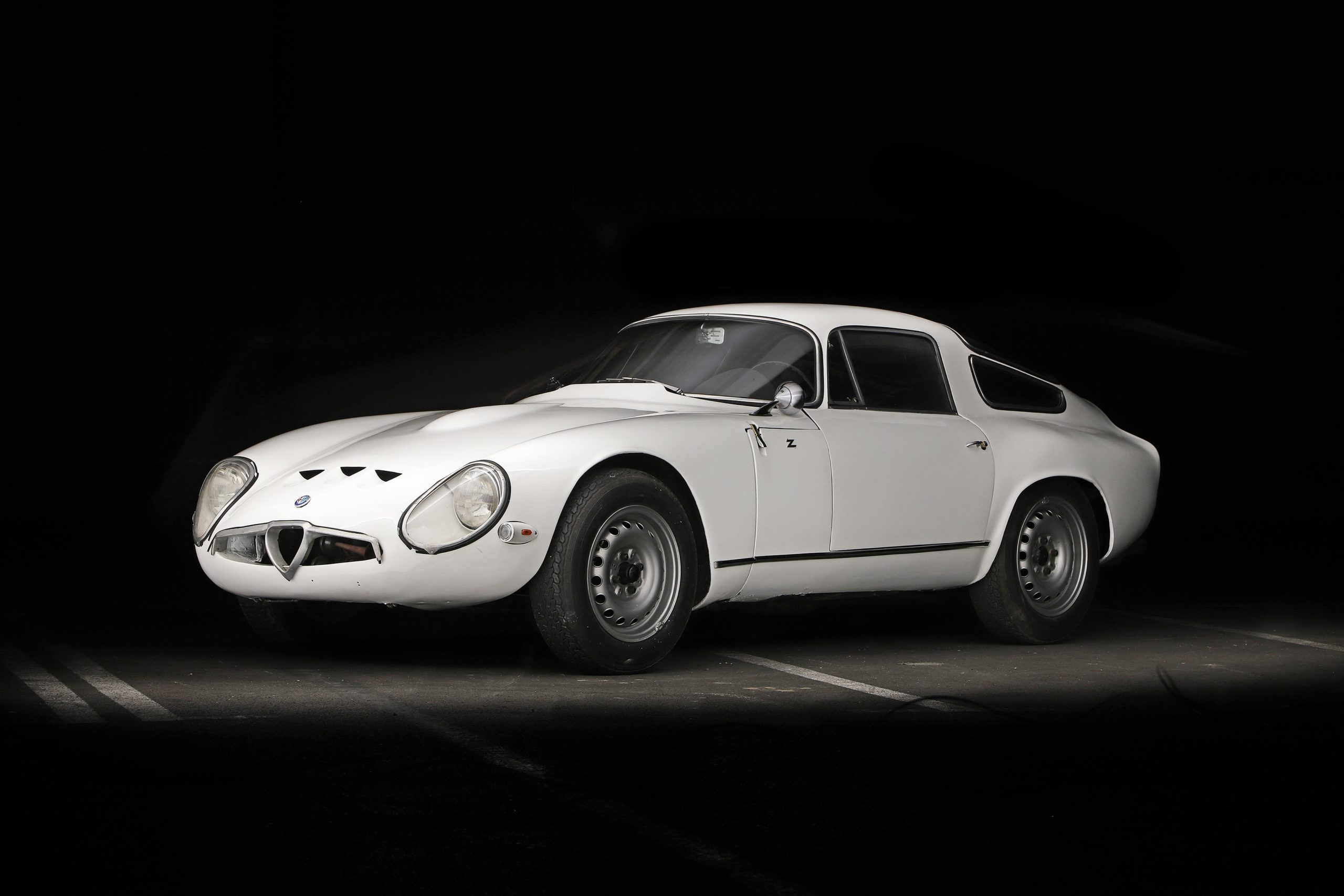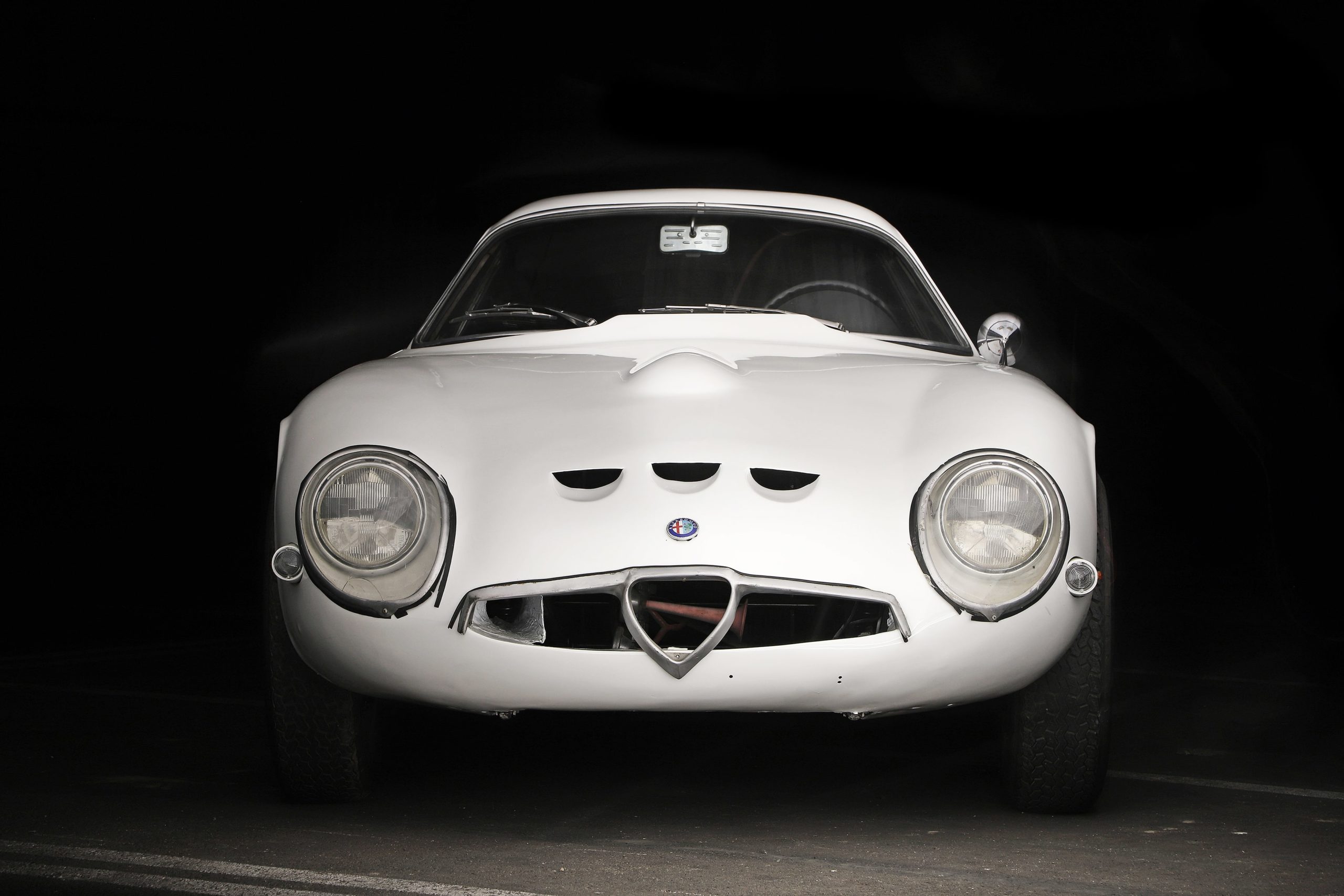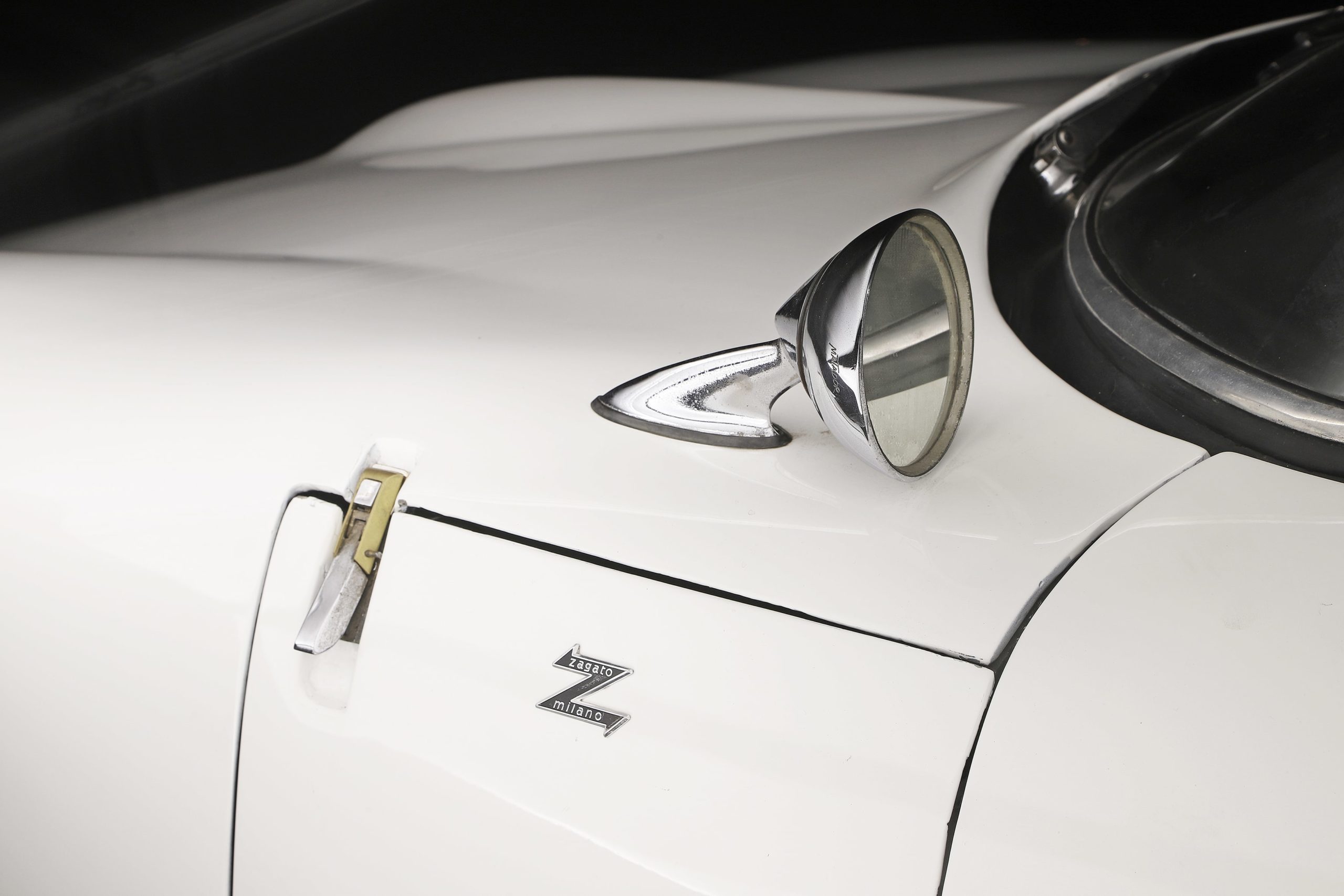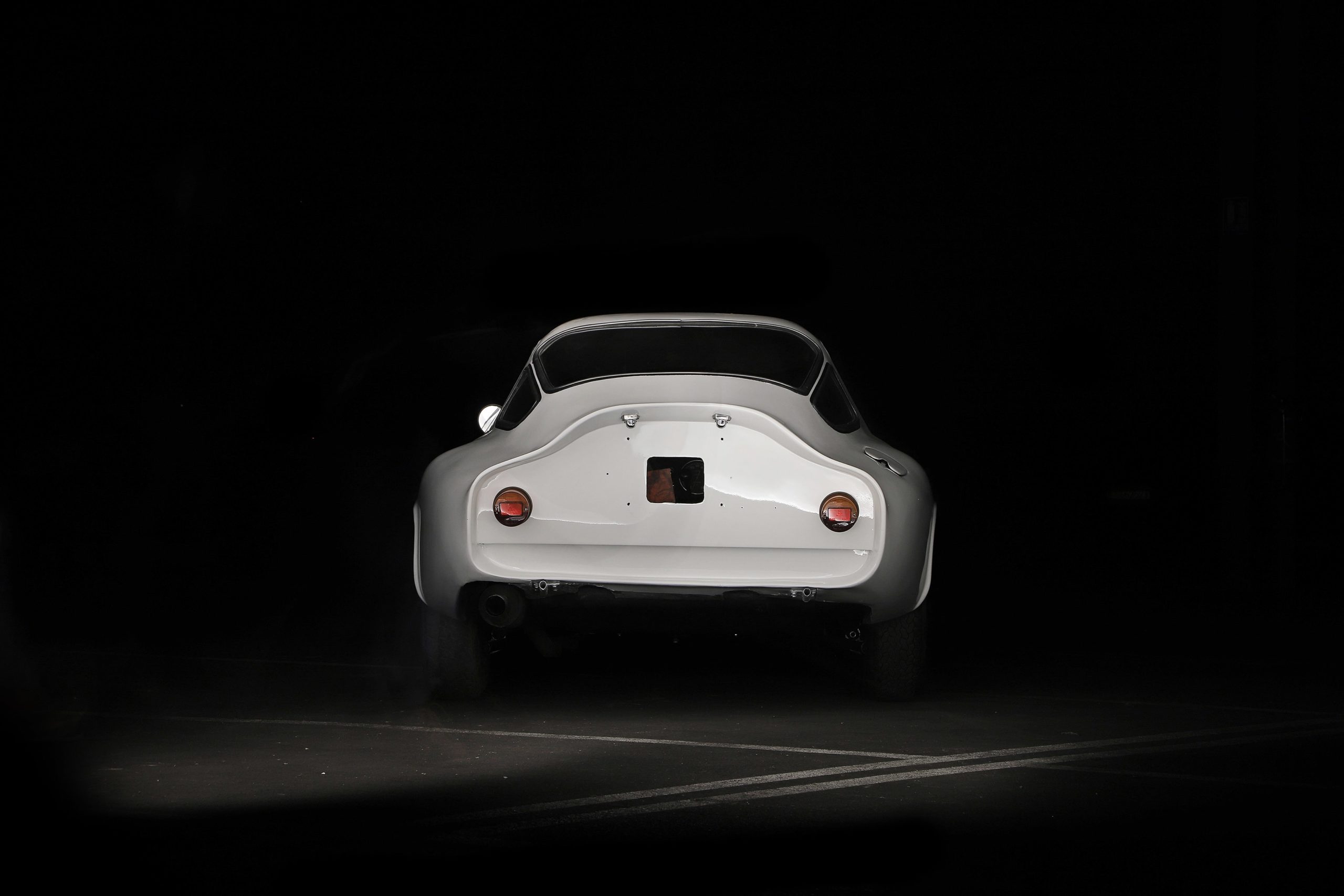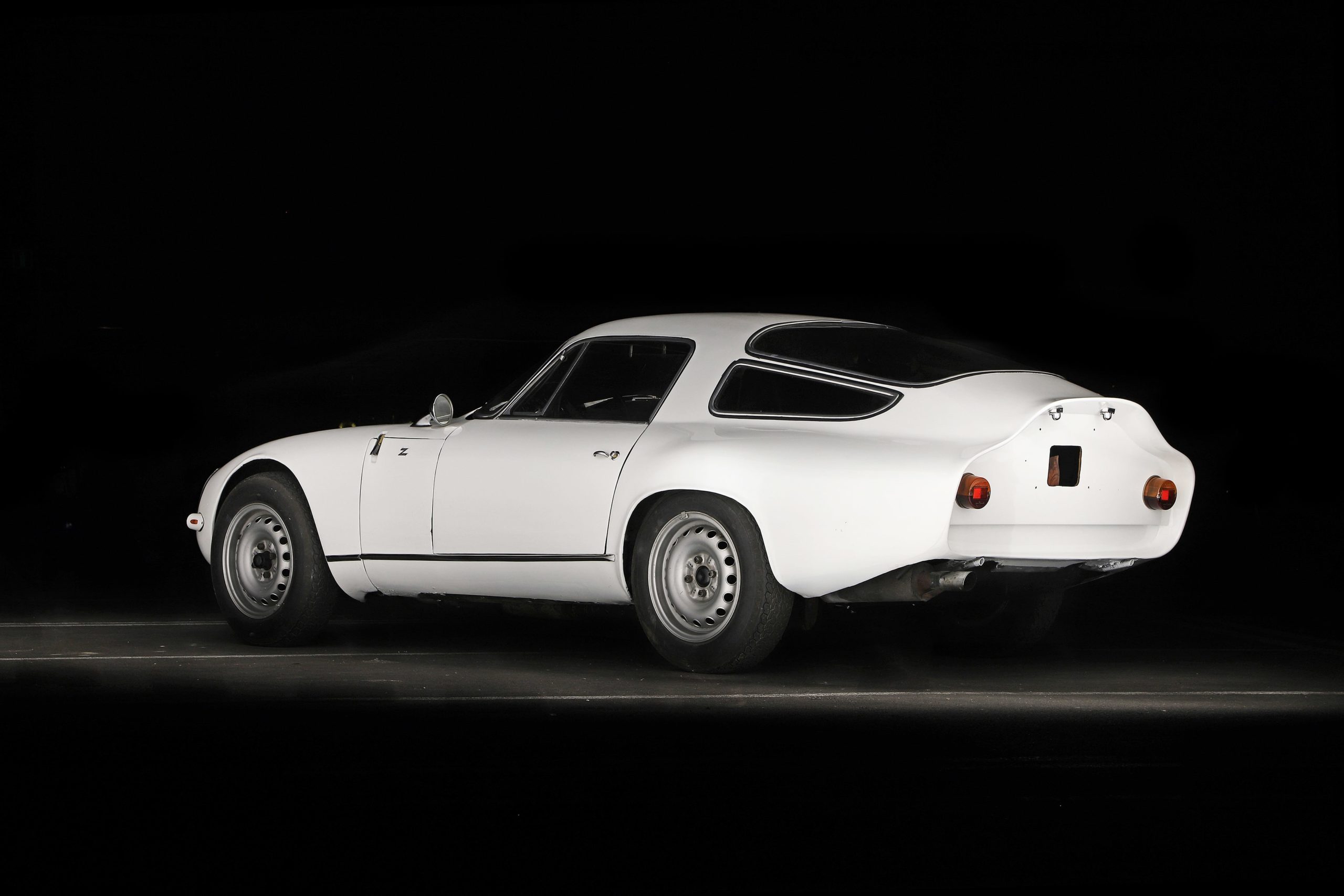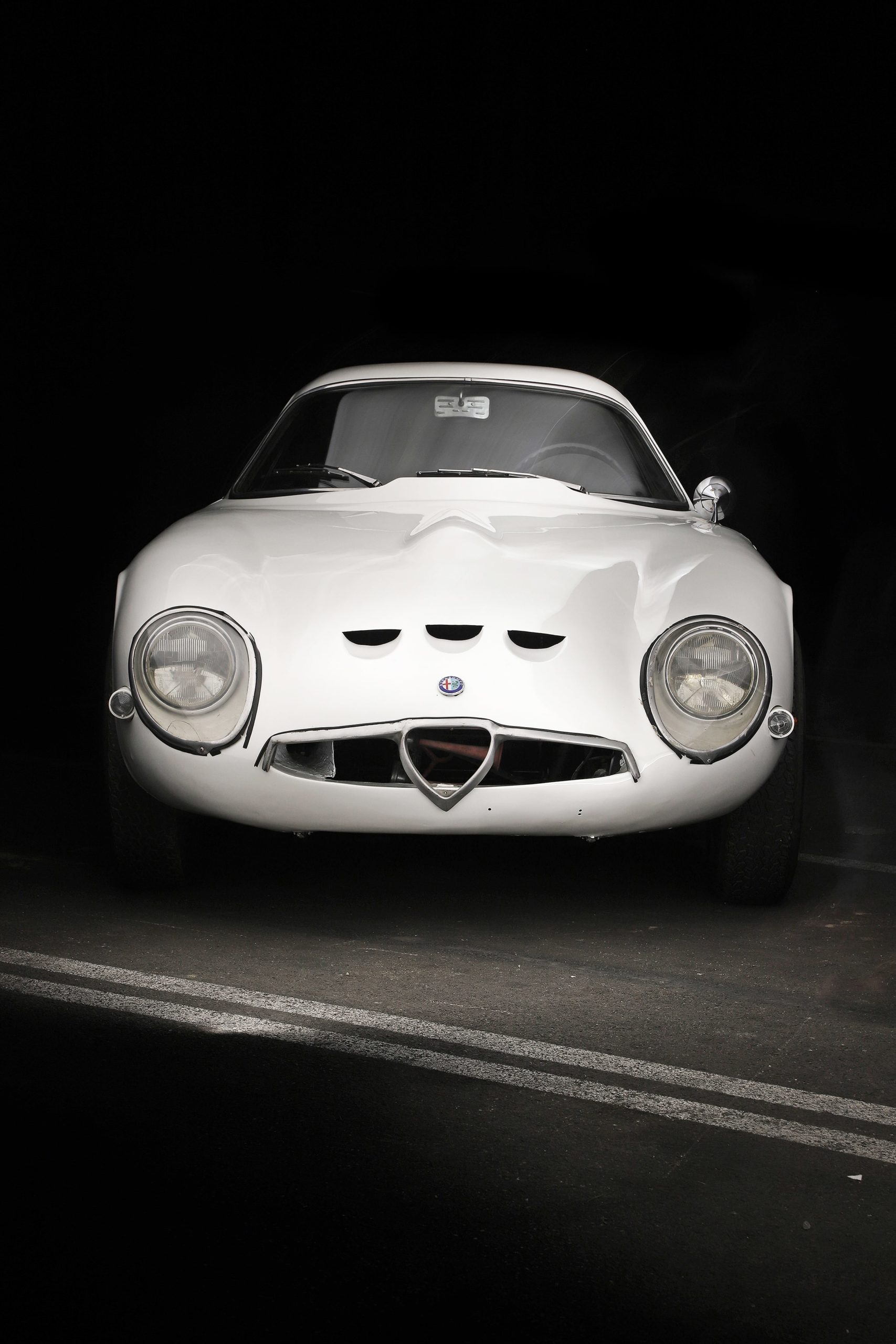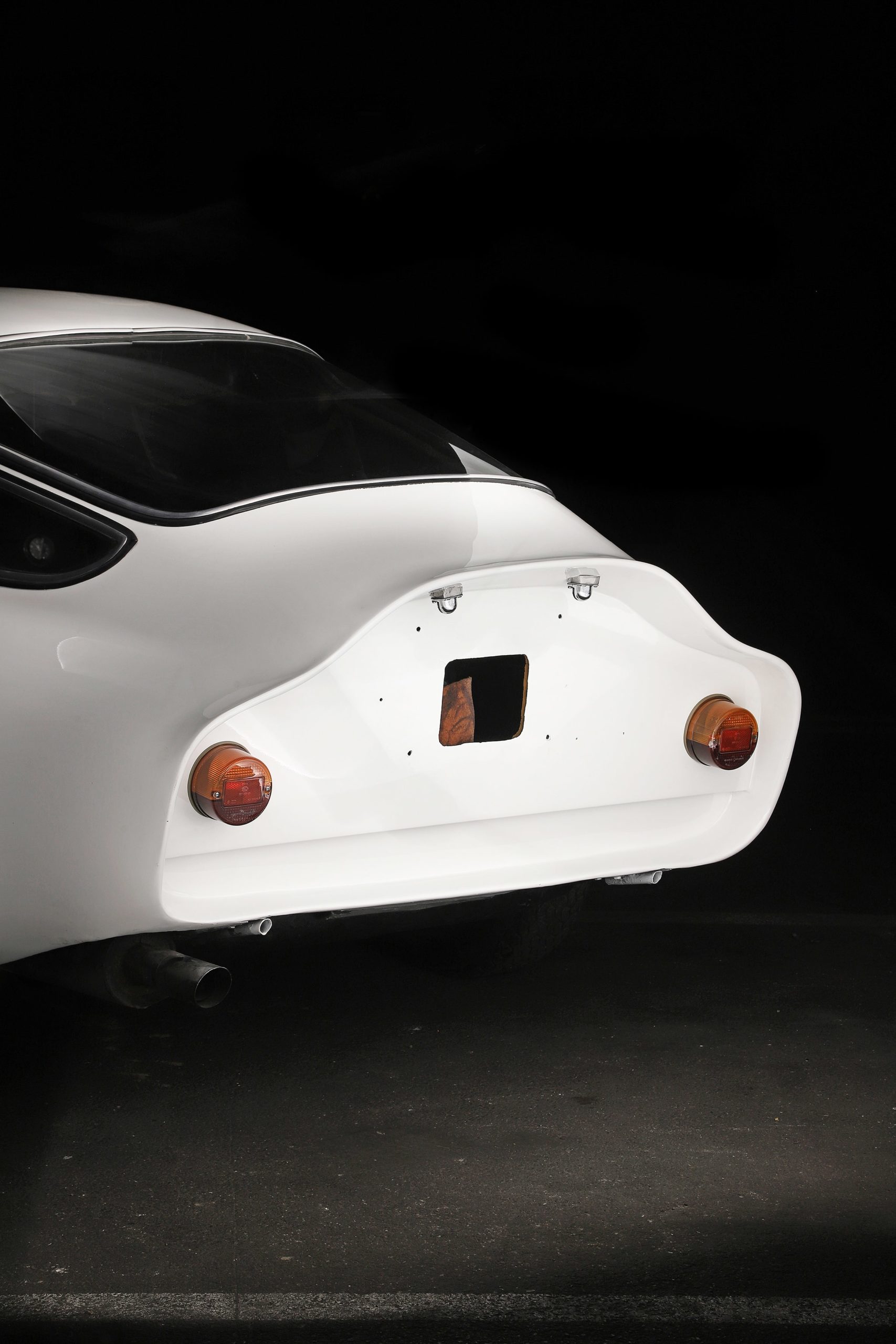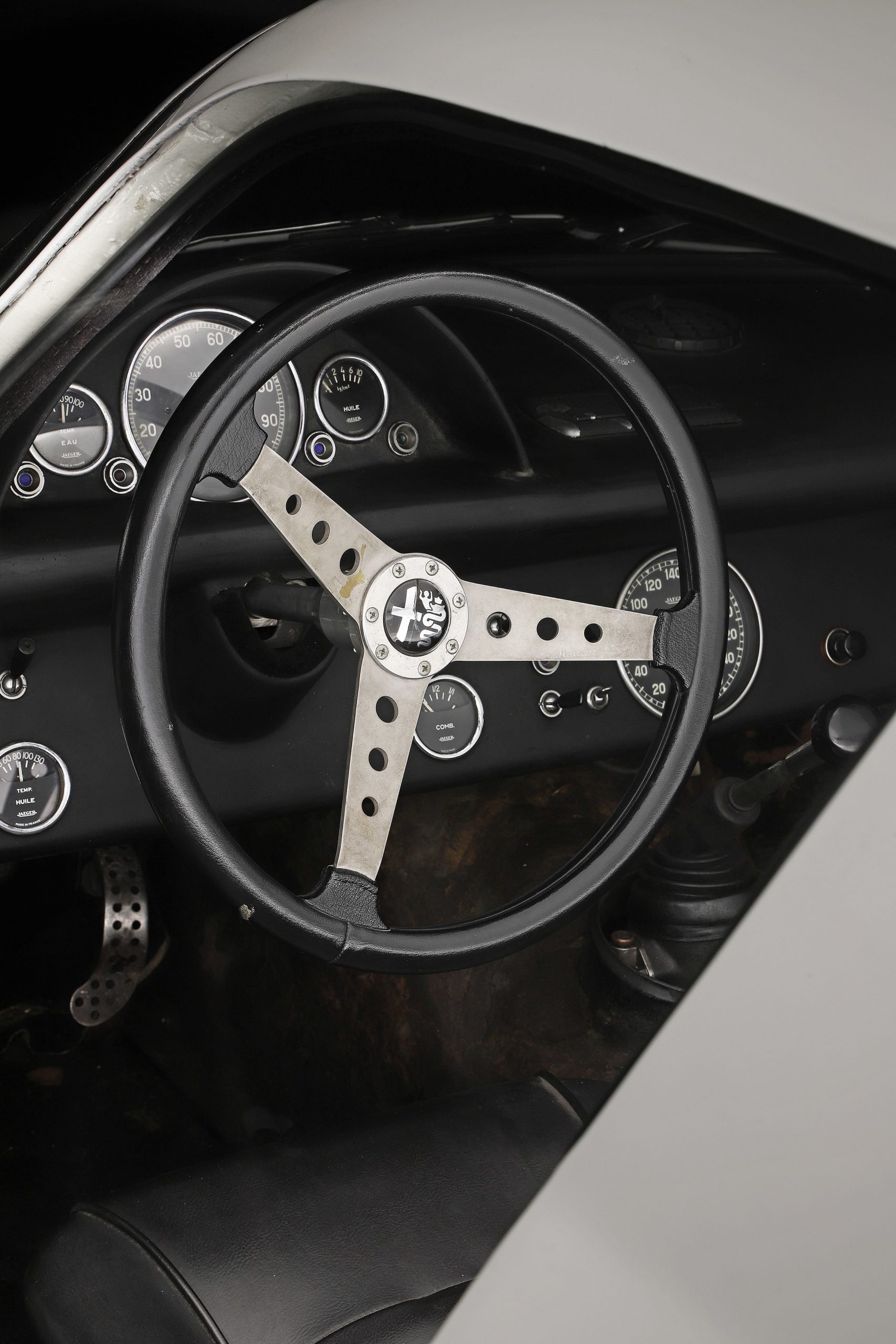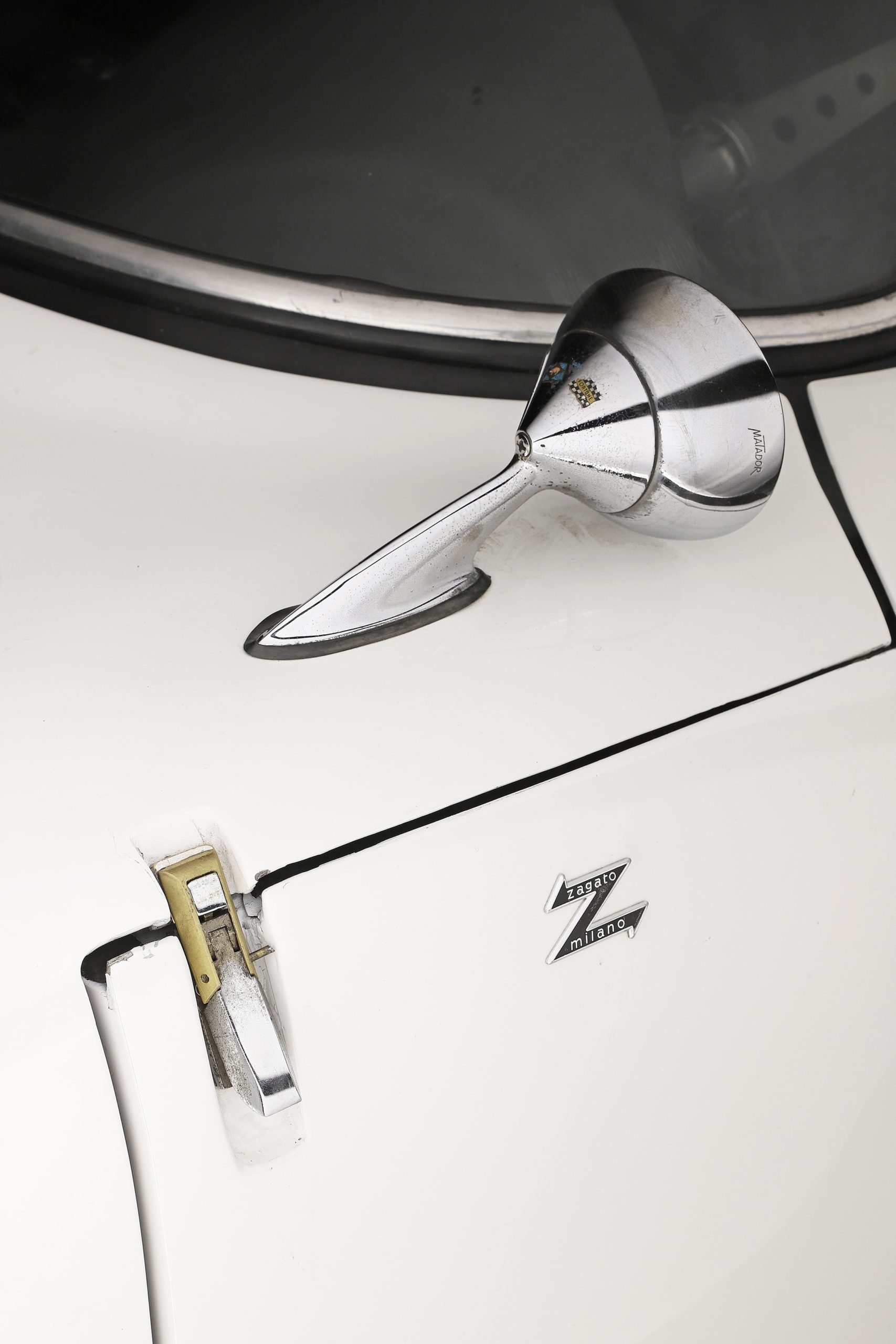Alfa Romeo Giulia Tubolare Zagato (TZ) - 1965
— The baby GTO —- Model An automotive icon created by Zagato.
- Competition A genuine racing car for the road with smashing victories in the most famous competitions worldwide.
- History A car with a clear Italian history, which has also been part of Rosso Bianco collection.
- Condition An unmolested, authentic, almost untouched and “matching numbers” TZ authenticated by Alfa Romeo official documents.
- Engine restart A car that has just been restarted by RS Historics in Italy.
The Alfa Romeo Giulia TZ is undoubtedly one of the most beautiful racecars from the Sixties. It was created in what can be described as a golden age for Zagato. Its then head of design, Ercole Spada had already created a true masterpiece: the Aston Martin DB4 GT Zagato. He was then 23 year old and had only seven months to design this car. Needless to say the Alfa Romeo Giulia TZ is definitely his other most famous masterpiece…
The best of the “Coda Tronca” school of design
Ercole Spada most famous turning point in his prolific career started when he decided to focus on aerodynamic efficiency. His research gave birth to the “Coda Tronca” concept also known as “kamm tail”, which he applied on his most iconic creations, mostly on Alfa Romeos at first. It all started with the Alfa SZ2, then the Alfa Romeo Giulia TZ and TZ2, and then the 2600SZ.
If the test & development of the cars was done in a very empirical way, driving them with Elio Zagato at night as fast as possible on public highways to measure the impact of design improvements, the idea of cutting the back of sports cars was actually directly inspired by a much older research study.
As Ercole Spada explains: “In reality, the coda tronca was invented in the 1930s by two German engineers who proved that a drop of water was the perfect shape in terms of aerodynamics efficiency. As the drop rear is too long for a car, they actually proved that cutting the drop had the same aerodynamics effect. But nobody dared cutting off the back of a car, so all cars have been designed with round backs. I was the first to cut the drop properly, creating the cut tail, or coda tronca in Italian. It was my most successful aerodynamic experiment of the 1960s.”
The Alfa Romeo Giulia Tubolare Zagato (TZ), called internally the 105.11 project, was launched after tow important cars for the Biscione brand: first, the Alfa Romeo SZ called “Coda Tonda” (round tail) and, second the SZ2, which inaugurated the “Coda Tronca” line of cars. For the TZ, Spada moved the cabin as far back as possible and completely reversed the rear stern, giving the car very taut lines. It proved to be a winning combination.
Unlike the SZ, the TZ has been designed as a genuine competition car that was homologated in period both for the road and for the GT class, thanks to a minimum of 100 cars made (a total of 112 cars have been made).
©Aguttes
One of the best race cars of its era
Nicknamed “ the baby GTO ”, the TZ is first of all a very light car, weighting 660 kilos only thanks to its tubular chassis and its thin aluminium shell on top of it. The chassis was entrusted to two renowned names in engineering, Giuseppe Busso and Gioacchino Colombo, who were both coming from Ferrari. The tubular structure (“tubolare“ in Italian) was made in welded steel, it offered an ideal weight distribution and was truly lightweight with only 125 kg.
As Alfa Romeo was not able to produce the tubular chassis, it was decided to partner with an Italian company: the SAI Ambrosini (Societa Aeronautica Italiana) in Passignano. Auto Delta managed by two well-known engineers, Carlo Chiti and Ludovico Chizzola, then assembled the car. They helped Alfa Romeo to complete the TZ project and to build the first 100 cars. In May 1963, Auto Delta became the official Alfa Romeo racing department.
As for the heart of the car, a superb engine powers the TZ: the famous Alfa Romeo’s in-line 4-cylinder, 8-valve equipped with a double overhead camshaft. Two Weber double 40 carburettors feed the aluminium block and head. With a displacement of 1,570 cc, it develops 112 hp in the TZ road version and 160 hp in the competition one, thanks to a dual ignition cylinder head, the famous Twin Spark. Being lightweight with such a great engine allowed the car to reach a top speed of 216 km/h.
For maximum efficiency, the car was also equipped with disc brakes and independent suspensions on all four wheels.
In 1963, the TZ won its first race with a class victory at the Coppa FISA in Monza in the hands of Lorenzo Bandini, followed by another class victory at the 12 Hours of Sebring in 1964. The TZ then won the 1964 Coupe des Alpes with the French team of Jean Rolland and Gaby Augias. The TZ class victories between 1964 and 1967 are countless and all the more impressive as they took place in the most gruelling and diverse competitions, such as the 24 Hours of Le Mans, the Targa Florio, the Nürburgring 1000 Km and the Tour de France Automobile.
These numerous class victories all prove how fast, agile and efficient is this very versatile car, at ease on both rally stages and track races. It also explains why the TZ is still a must-have in historic competition and very sought after.
©Aguttes
One of the most original and unmolested Giulia TZ around
The ANNA LISA Art On Wheels collection’s 1965 Alfa Romeo Giulia TZ is a sublime testimony of a very well preserved and almost untouched car with an unbroken history.
In 2019, the Alfa Romeo Documentation Center issued a certificate stating that chassis AR 750091 is a matching numbers car, which left Zagato workshop in April 1965 in red with a black interior.
Sold new in Italy to Giovanni Bellichi in Milan, the car then had different Italian owners, one of them being the gentleman driver Girolami Vittorugo, famous for owning more than an Italian racing car. The TZ, then registered “Roma T02276” was parked in his roman estate next to #0667GT, his Ferrari 250 GT Tour de France. The car was then already white and certainly had its rear wheel arches widened for local racing. He kept it for six years before selling it in 1983. The TZ later joined the renowned 200 cars «Rosso Bianco» collection belonging to Peter Kaus. In December 1990, the car was sold through a Parisian Zagato only auction to the second to last owner who parked it in a garage for 28 years. The car is actually identical to what it looked like on the pictures taken 28 years ago.
After joining our collection, we decided to send the car to RS Historics in Italy, one of the most knowledgeable racing workshops for vintage Alfa Romeo. The report is very clear: this TZ is one of the most original and unmolested TZs in the world. The chassis, the engine, the gearbox, the axle… are all authentic and original.
Of course, some parts like the steering wheel or the seats are non-original; they have most probably been replaced in the 70s.
After changing the ignition and the condenser, RS Historics was able to start the car easily. Both the suspensions and brakes master cylinders have also been rebuilt so as to test-drive the car in the best possible conditions on open roads.
To discover in detail an unmolested and untouched TZ, with a clear unbroken history, is extremely rare and all the more moving.
